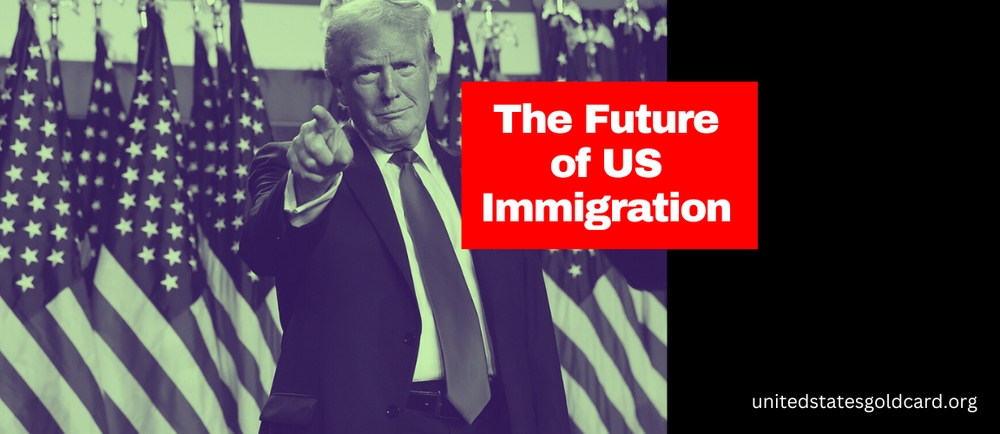Published
- 4 min read
The Future of US Immigration: Trump’s Second Term and the Gold Card Visa

The Future of US Immigration: Trump’s Second Term and the Gold Card Visa
How Bold Policies Are Reshaping the Landscape of American Immigration
Trump’s return to the White House has ushered in a series of ambitious—and often polarizing—immigration policies that challenge long-standing norms. At the heart of this agenda is the Gold Card visa, a high-stakes proposal that aims to streamline investor immigration by requiring a $5 million cash investment. But how does this initiative fit into the broader picture of Trump’s second-term immigration strategy? Let’s explore the key themes, policies, and potential impacts shaping the future of U.S. immigration under his renewed leadership.
A New Immigration Vision for a New Term
During his second term, President Trump has wasted no time in making his mark on immigration policy. Unlike his first term—which was defined by aggressive border control measures and controversial executive orders—his current approach blends economic incentives with a hardline stance on unauthorized migration. The Gold Card visa is a standout example of this dual strategy:
- Economic Focus: The Gold Card visa aims to attract only the wealthiest investors, promising a fast track to residency in exchange for a substantial financial commitment. This reflects a broader emphasis on leveraging high-value investments to boost the economy.
- Streamlined Process: By removing cumbersome requirements like job creation, the administration seeks to offer a more efficient path to citizenship—albeit one that remains accessible only to the ultra-rich.
Integration with Other Immigration Policies
Trump’s second-term immigration policy is not solely about investor visas. It also includes several other notable measures that together paint a picture of an immigration system in transformation:
- Crackdown on Unauthorized Immigration: Alongside the Gold Card proposal, the administration continues its efforts to enforce immigration laws more strictly. This includes plans to implement comprehensive registration systems for undocumented immigrants, enhanced vetting procedures, and tougher penalties for non-compliance.
- Revamping Existing Programs: By proposing to replace the EB‑5 program with the Gold Card visa, Trump signals a willingness to overhaul longstanding systems. His administration argues that such changes are necessary to reduce fraud, increase transparency, and ensure that only the most qualified applicants gain access to citizenship.
- Border and Security Measures: Consistent with past policies, Trump’s current term emphasizes a secure border. Executive actions to restrict entry, reevaluate asylum policies, and bolster border enforcement continue to play a central role in his overall strategy.
Economic Implications: A High-Risk, High-Reward Gamble
The Gold Card visa represents a significant departure from traditional immigration pathways. Its high investment threshold is intended to ensure that only elite investors can participate, thereby promising several economic benefits:
- Revenue Generation: Proponents argue that the program could generate substantial revenue—potentially contributing to reducing the national debt. However, experts caution that the pool of eligible investors is limited, which could temper these optimistic projections.
- Quality Over Quantity: By targeting a niche segment of the global investor community, the administration hopes to attract individuals who will make high-quality investments that drive real economic growth. Critics, however, warn that removing direct job creation requirements might undermine the tangible economic impact of these investments.
Legal and Political Hurdles
No discussion of Trump’s immigration overhaul would be complete without considering the legal and political challenges it faces:
- Executive vs. Legislative Authority: Immigration is a power vested in Congress, and many legal experts argue that unilateral executive actions—such as replacing the EB‑5 program with the Gold Card visa—could be vulnerable to constitutional challenges. Early judicial rulings and expert commentary suggest that these issues may ultimately determine the viability of the initiative.
- Public Perception and National Identity: Beyond the legal debates, Trump’s policies have sparked a broader discussion about the meaning of citizenship. Critics argue that selling residency rights to the highest bidder risks undermining the democratic values of fairness and equal opportunity that many believe should be the cornerstone of U.S. immigration.
Looking Ahead: A Changing Landscape
Trump’s second-term immigration policies, including the controversial Gold Card visa, are set to redefine how America attracts and integrates foreign talent and investment. The coming months will be critical in assessing whether these initiatives can overcome legal challenges, deliver on their economic promises, and ultimately transform U.S. immigration for the better.
As the administration refines its policies and faces scrutiny from courts, industry experts, and the public, one thing remains clear: the future of U.S. immigration is poised for a dramatic shift—one that could have far-reaching implications for the country’s economic, legal, and social fabric.